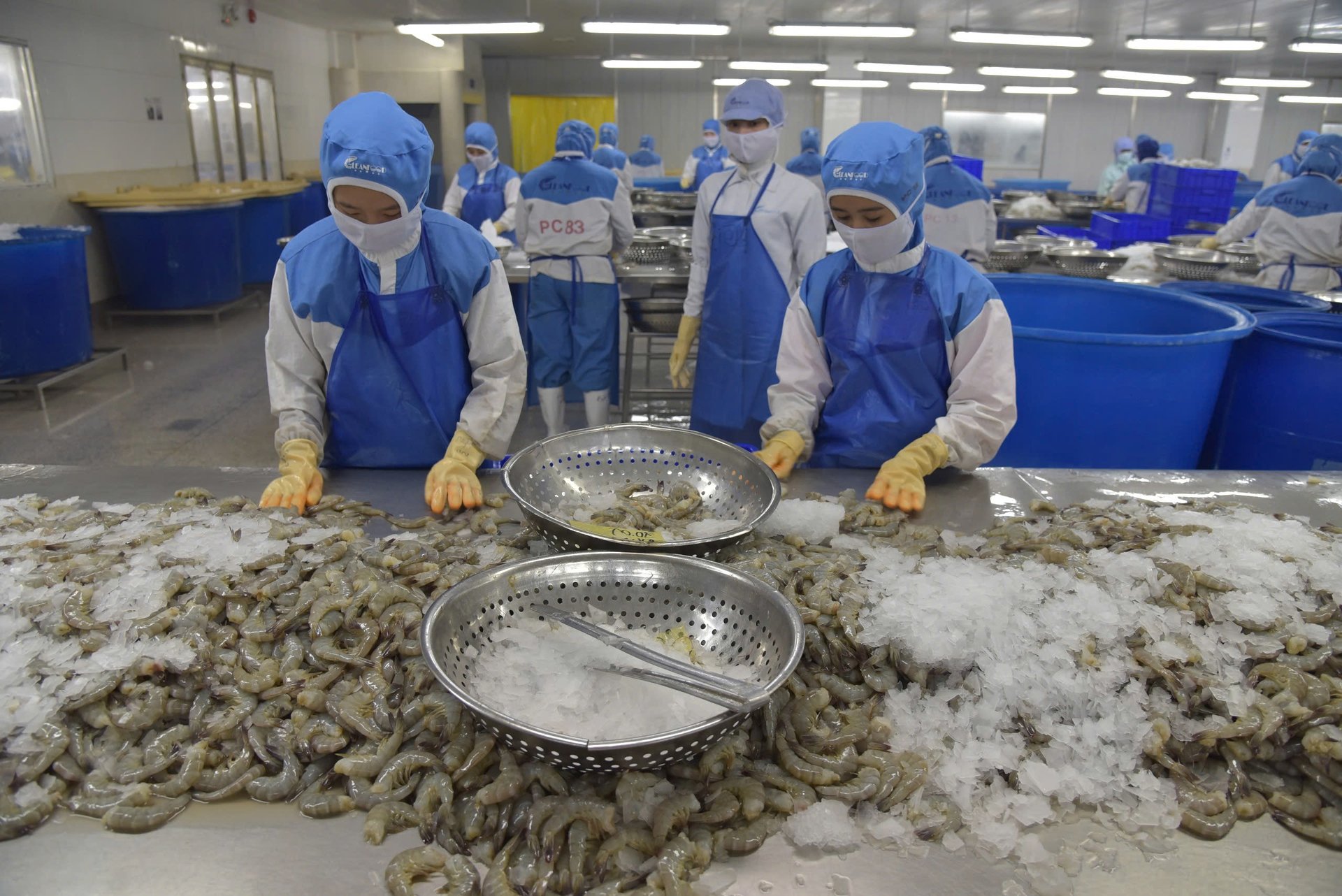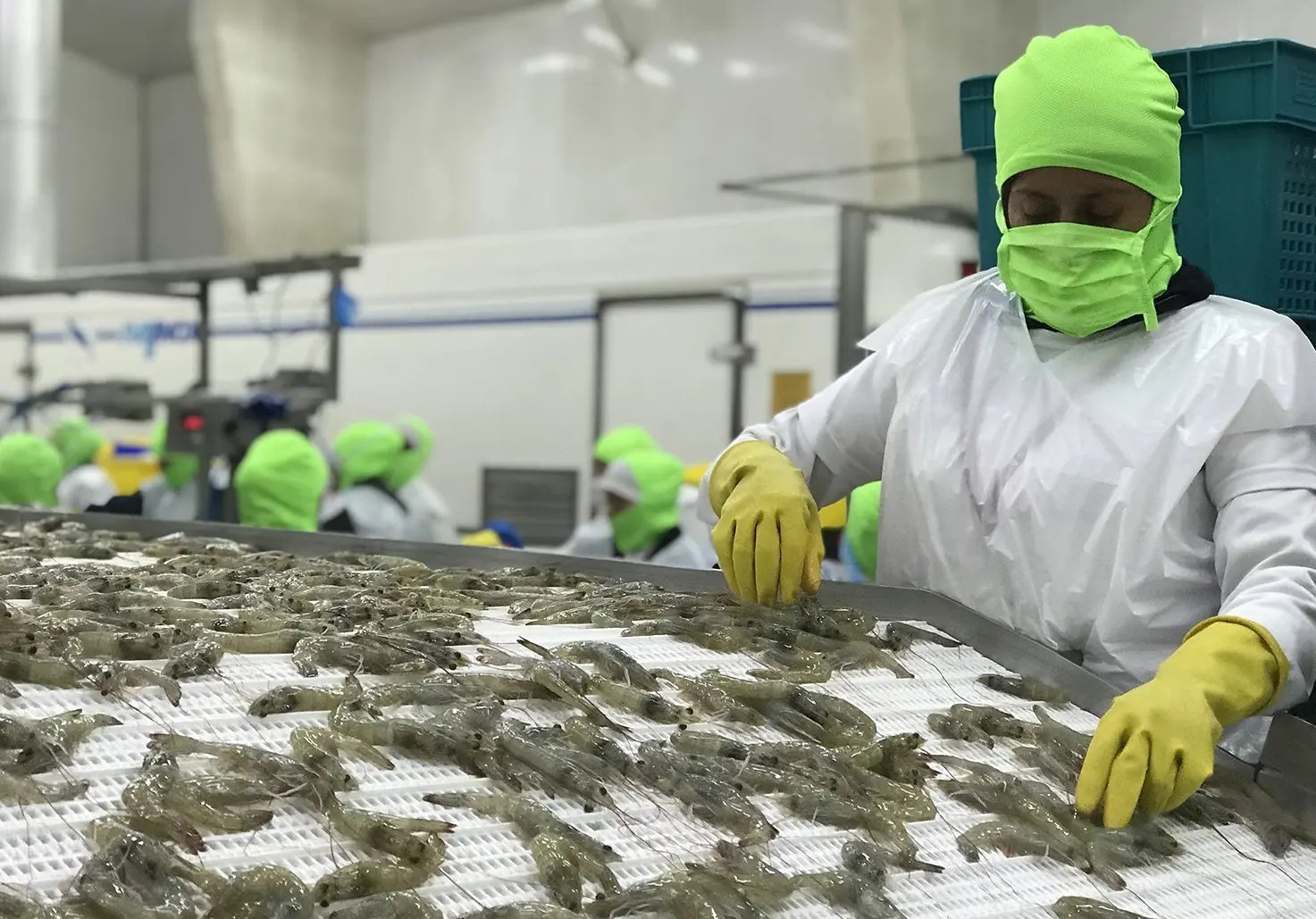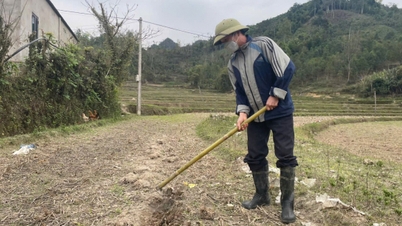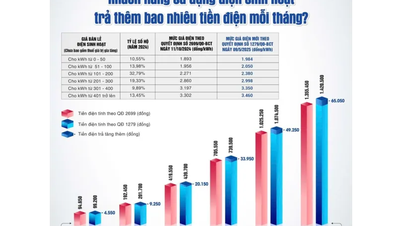Vietnamese shrimp "bears" many types of taxes
At 11:01 a.m. on April 9, Vietnam time, US President Donald Trump's reciprocal tariff policy officially took effect, including a 46% tax rate on Vietnam. Besides Vietnam, 85 other countries also faced higher reciprocal tariffs today.
With such a large tax difference, Vietnamese seafood in general and shrimp in particular - one of the billion-dollar export items to the US in 2024 - is almost unable to compete, especially when Ecuador only pays a 10% tax.

Vietnam's shrimp exports will find it difficult to compete in the US market. Photo: Hong Tham .
According to the Vietnam Association of Seafood Exporters and Producers (VASEP), in recent years, the US has always been Vietnam's largest and traditional shrimp export market, accounting for about 20% of Vietnam's total shrimp export turnover.
Vietnam's shrimp export turnover to the US ranges from 800 million USD to 1 billion USD, reaching a record of 1 billion USD in 2021. And there are currently about 230 enterprises participating in exporting shrimp to this market.
The 46% tax rate makes it impossible for businesses to compete, while consumers cannot afford it even if they want to share.
Previously, businesses only predicted that the tax rate would be around 10%, but the actual figure was many times higher. Without a solution from the Government or negotiations to adjust the tax rate, withdrawing from the US market is no longer a prospect.
Another concern is that if the US calculates taxes based on the date of arrival instead of the date of departure, shipments that left Vietnam before April 5 but have not yet arrived in the US could still be subject to new taxes, which could cause serious damage. According to calculations, a shipment worth $5 million could lose more than $2 million if taxed at 46%, putting businesses in a difficult situation.
Not only facing new import taxes, Vietnamese shrimp exports are also under pressure from two anti-dumping (AD) and anti-subsidy (CVD) lawsuits in the US.
How will the global shrimp trade landscape change?
According to Shrimpinsights, although it is too early to make a definitive prediction, US President Donald Trump's new trade policy will clearly have a significant impact in the short term and is likely to have far-reaching effects in the medium and long term on global shrimp trade flows.
Ecuador and some smaller producing countries such as Argentina, Honduras, Mexico, Guatemala, Peru and Saudi Arabia will have a clear competitive advantage over most Asian countries. They can take advantage of the opportunity to increase their market share.

Ecuador and several smaller shrimp-producing countries such as Argentina, Honduras, Mexico, Guatemala, Peru and Saudi Arabia will have a clear competitive advantage over most Asian countries. Photo: Ma. Fernanda Vílches .
Ecuador and other Latin American producers will boost production of peeled and value-added shrimp products, which are in high demand in the U.S. market. The move comes at a time when demand from China is uncertain. Expanding the U.S. market could help Ecuador reduce its risk.
Among Asian countries, India, despite being hit with a 26% tariff, still has a relative advantage over other major suppliers such as Indonesia (32%), Thailand (36%) and Vietnam. India can target product segments that Latin American producers are not yet ready to supply.
Although shares of listed Indian shrimp companies fell sharply overnight, the Indian shrimp industry has proven resilient to volatility, with Indian exporters able to hold onto market share in products that Latin American suppliers have not yet met.
In addition, India will also strengthen its relationship with US retailers, while expanding exports to the EU and other markets with peeled and processed shrimp products. India can also diversify into other aquatic species and develop value chains in farming, processing and exporting.
Manufacturers in Indonesia and Vietnam are in the toughest position due to high production costs, high US tariffs and fierce competition from Ecuador and India in other markets. Developing the domestic market will take time and competing in other markets is not easy.
Smaller suppliers like Bangladesh and Sri Lanka have been hit harder and may find it difficult to continue exporting to the US.
On the US side, domestic shrimp farmers and fishermen can increase production and market share thanks to new competitive advantages. However, they are unlikely to replace much of the market demand for shrimp because of many limitations in production, not simply related to cost factors.
Source: https://nongnghiep.vn/thue-doi-ung-cua-my-se-lam-thay-doi-cuc-dien-thuong-mai-tom-toan-cau-d747251.html





![[Photo] General Secretary To Lam arrives in Minsk, begins state visit to Belarus](https://vphoto.vietnam.vn/thumb/1200x675/vietnam/resource/IMAGE/2025/5/11/76602f587468437f8b5b7104495f444d)
![[Photo] General Secretary To Lam concludes visit to Russia, departs for Belarus](https://vphoto.vietnam.vn/thumb/1200x675/vietnam/resource/IMAGE/2025/5/11/0acf1081a95e4b1d9886c67fdafd95ed)
![[Photo] General Secretary To Lam meets and expresses gratitude to Vietnam's Belarusian friends](https://vphoto.vietnam.vn/thumb/1200x675/vietnam/resource/IMAGE/2025/5/11/c515ee2054c54a87aa8a7cb520f2fa6e)

















![[Photo] National Assembly Chairman Tran Thanh Man attends the Party Congress of the Committee for Culture and Social Affairs](https://vphoto.vietnam.vn/thumb/1200x675/vietnam/resource/IMAGE/2025/5/11/f5ed02beb9404bca998a08b34ef255a6)
































































Comment (0)